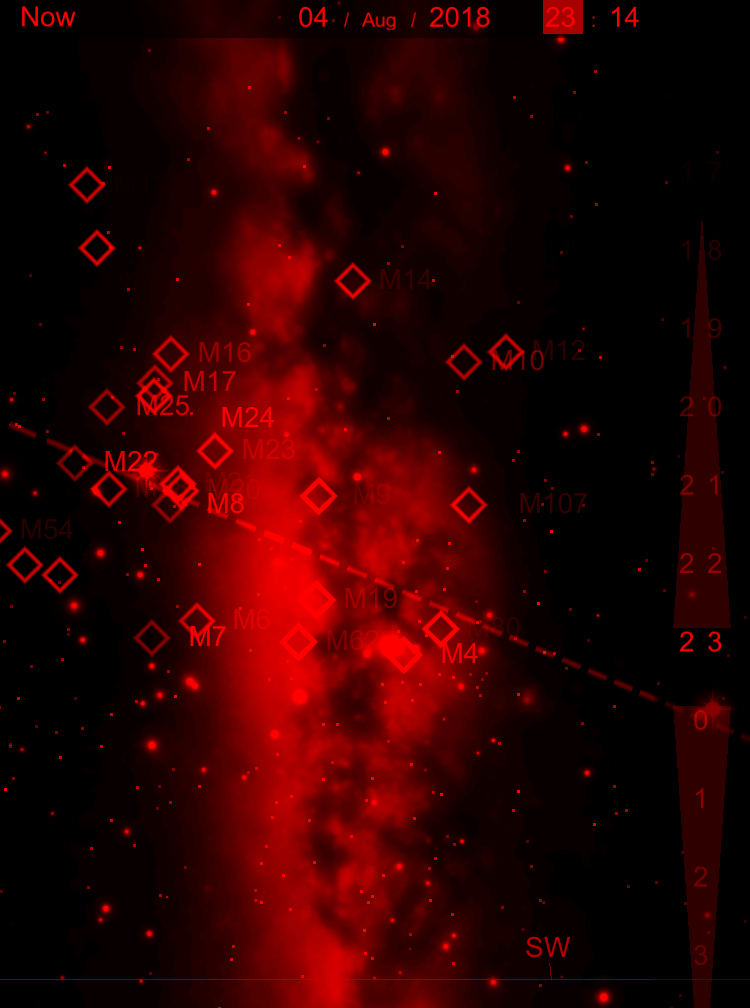One-Shot: Visiting the Milky Way
The most compelling thing about going to see the Milky Way is coming back again, watching it slowly fade out of the sky.
The Floridian Peninsula is heavily polluted with light, especially where I live. The nearest place where the Milky Way is visible with any discernible detail is a two hour drive; and even then, it is only a small "hole" of pure sky, nothing like the velvety darkness of true wilderness.
When looking at the galaxy, it is difficult to "place" yourself amongst it, like trying to envision a whole forest while you are inside, at the base of a single tree. This difficulty is also due, in part, to the dome-shaped sky viewed from the obtuseness of a seemingly-flat plane, which can, depending on orientation, make the galaxy seem "curved" in appearance like a parenthesis. Its cloudlike texture is also tricky, making it next-to-impossible to envision the Milky Way's composition of hundreds of billions of stars and interstellar dust.
In any case, and any location, it is a challenging meditation. Ultimately, it is far easier for me to imagine myself inside the galaxy while *not* looking at it. When it is right in front of you, visual and gravitational inputs simply don't agree with what is, in fact, being experienced. In this situation, the imagination is a much more versatile and convincing construct than reality.
However, there are a few points which help me to experience that awesome reality. Firstly, forget Earth and the Sun. Ignore terrestrial and stellar frames of reference, and place yourself solely in the galactic one. It's not hard to imagine being on a sphere spinning round and round a star, but this relationship combined with envisioning the galactic scale reduces the impact of them both. Up/Down must be relative to the galaxy's plane.
A crucial mental exercise is understanding the physical depth of space. The sky isn't a planetarium. Some objects are farther away than others. Thought incorrect, it does help to pretend the dimmer objects are the farthest. The rotation of the galaxy is also an important visualization for understanding depth. The objects in the sky are spinning round the galactic core - a massive carousel in which stars 90º from the core are either ahead/behind us.
Another thing that helps is observing Andromeda. Realize that it is essentially the same structure as our galaxy, and try to see yourself inside of it. Looking back at the Milky Way, understand that your body is part of it, not separate from it. You are the Milky Way, but the Milky Way isn't entirely you.
Now back to the initial statement. By this time, your eyes are well adjusted to darkness, rather like going into a cave. You can discern objects clearly and easily only because your pupils have been getting larger while descending into the darkness. If you were to teleport out of the cave, you would be blinded by how bright sunlight actually is compared to true darkness. When driving back into "civilization", oncoming headlights seem brighter than usual. The lonely filling station in the middle of nowhere is a spotlight. The nearest small town is a moonrise. The city is a sunrise. You get out of the car back home, look up, and see a boring amber blanket with one or two little dots (tonight, Saturn and Antares). Just a couple hours ago, it was an abstract painting with stars, hazy clusters and nebulae, and interstellar dust. There's no way it's the same object - that galaxy is an hundred miles away.
However, it's the exact same sky. Even though the galaxy seems to be back somewhere else, it is still there in the same exact place, has been the whole time, and will be tomorrow as well. We just don't see it. The reason I make that drive every blue moon is because of that realization - that it is always there. It gives me a lot of joy and gratitude. When the sun rises the next day and your side of Earth wakes up, it is all made more special by knowing that we're a cozy little corner of something astounding and vast. You thank space for being part of its existence.
ad astra
Cover image - screenshot of the app Star Chart, one of the best sky apps, red-filter view of the sky I observed (red-filter is best for dark light)


